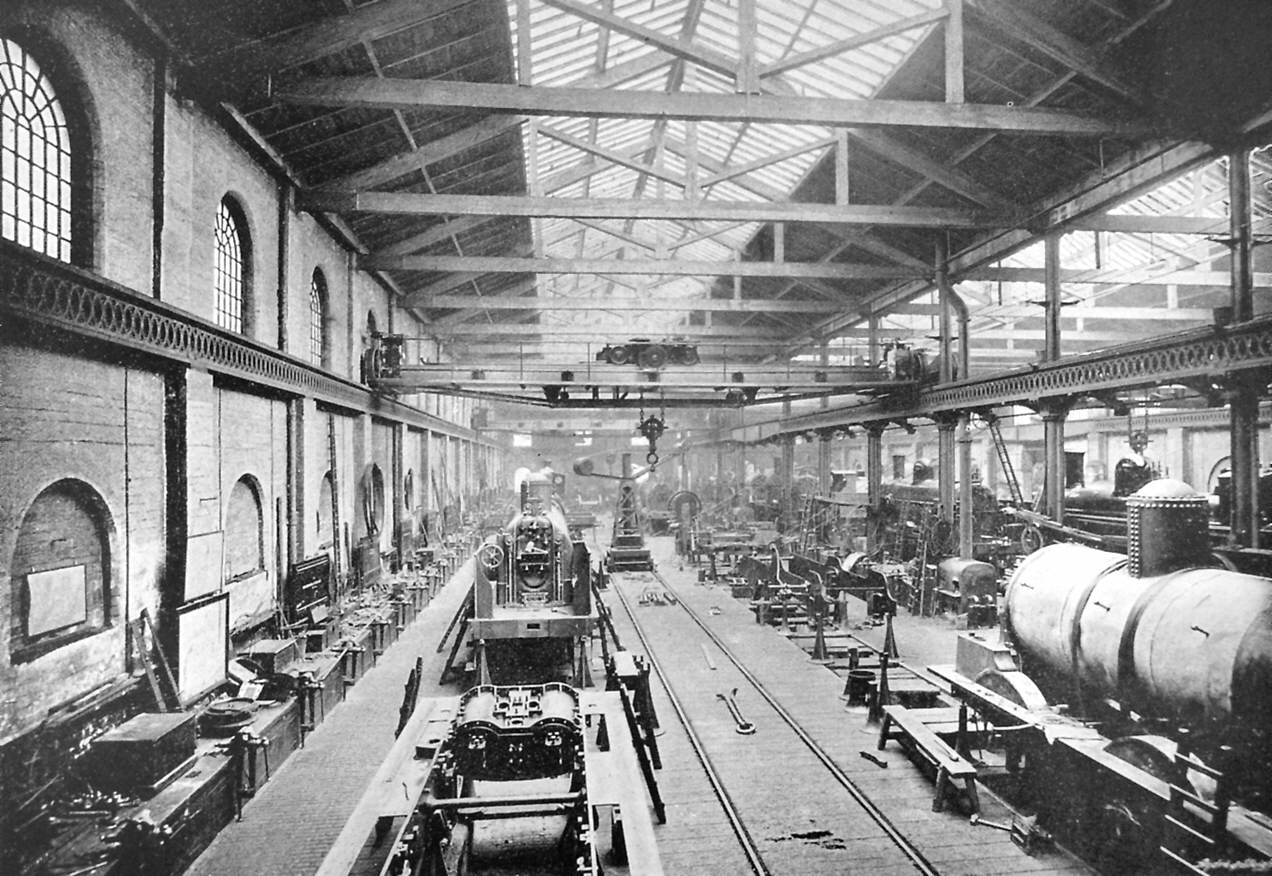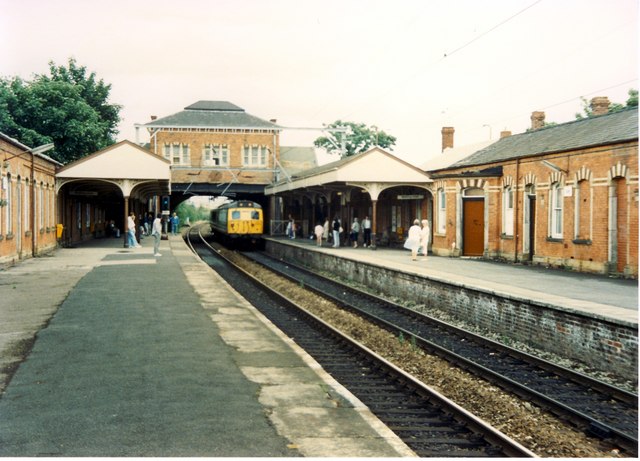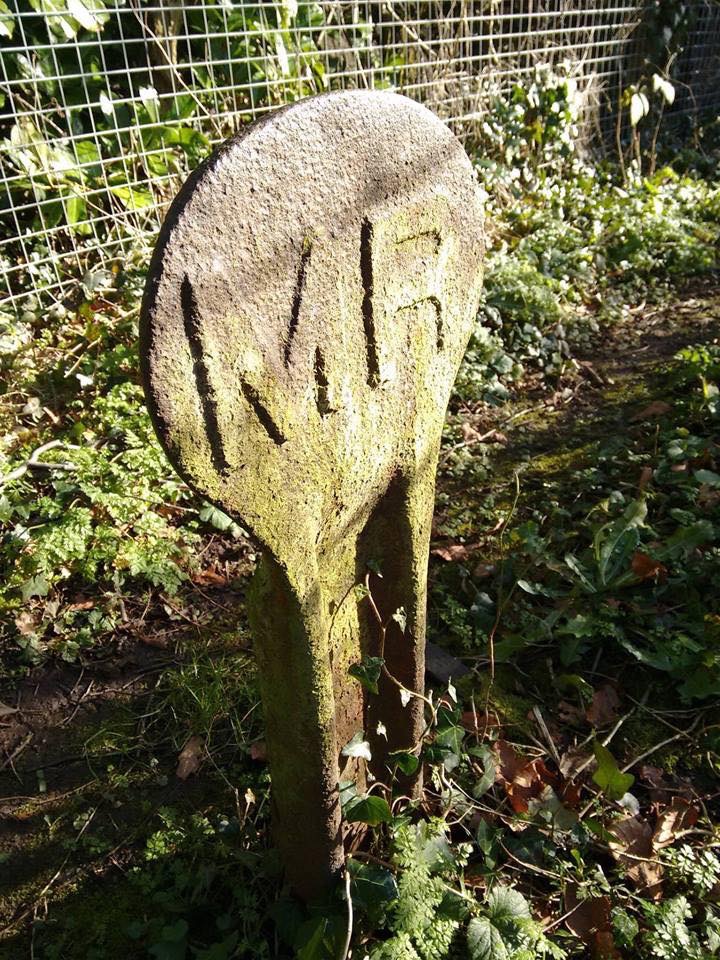|
Mid-Cheshire Line
The Mid-Cheshire line is a railway line in the north-west of England that runs from Chester railway station, Chester to Edgeley Junction in Stockport; it connects Chester with , via . After Chester Northgate railway station, Chester Northgate closed in 1969, the section between Mickle Trafford Junction and Chester was used for freight trains only until it closed in 1992; from Mickle Trafford, passenger trains use the Chester–Manchester line, Chester–Warrington line to Chester railway station, Chester General instead. The route taken by passenger trains has changed over the years and now differs considerably from the original. Between 2001 and 2014, passenger journeys on the line increased to over 1.7 million per year. A near doubling of the passenger service was expected to occur from December 2018, however this did not materialise. History Altrincham to Chester The Mid-Cheshire line has its origins in railways promoted by three separate railway companies in the 19th ce ... [...More Info...] [...Related Items...] OR: [Wikipedia] [Google] [Baidu] |
National Rail
National Rail (NR) is the trading name licensed for use by the Rail Delivery Group, a group representing passenger train operating companies (TOCs) of England, Scotland, and Wales. The TOCs run the passenger services previously provided by the British Railways Board, from 1965 using the brand name British Rail. Northern Ireland, which is bordered by the Republic of Ireland, has a different system. National Rail services share a ticketing structure and inter-availability that generally do not extend to services which were not part of British Rail. The brand has a dedicated website (see below) referred to as nationalrail.co.uk. Its brand name used to be 'National Rail Enquiries' denoted by the nomenclature 'NRE'. While today it is more commonly referred to as 'National Rail' by news and media, it is still known by the initials 'NRE'. National Rail and Network Rail ''National'' Rail should not be confused with ''Network'' Rail. National Rail is a brand used to promote pa ... [...More Info...] [...Related Items...] OR: [Wikipedia] [Google] [Baidu] |
London And North Western Railway
The London and North Western Railway (LNWR, L&NWR) was a British railway company between 1846 and 1922. In the late 19th century, the LNWR was the largest joint stock company in the world. Dubbed the "Premier Line", the LNWR's main line connected four of the largest cities in England; London, Birmingham, Manchester and Liverpool, and, through cooperation with their Scottish partners, the Caledonian Railway also connected Scotland's largest cities of Glasgow and Edinburgh. Today this route is known as the West Coast Main Line. The LNWR's network also extended into Wales and Yorkshire. In 1923, it became a constituent of the London, Midland and Scottish (LMS) railway, and, in 1948, the London Midland Region of British Railways. History The company was formed on 16 July 1846 by the ( 9 & 10 Vict. c. cciv), which authorised the amalgamation of the Grand Junction Railway, London and Birmingham Railway and the Manchester and Birmingham Railway. This move was prompted, in ... [...More Info...] [...Related Items...] OR: [Wikipedia] [Google] [Baidu] |
Manchester Piccadilly Railway Station
Manchester Piccadilly is the main railway station of the city of Manchester, in the metropolitan county of Greater Manchester, England. Opened originally as Store Street in 1842, it was renamed Manchester London Road in 1847 and became Manchester Piccadilly in 1960. Located to the south-east of Manchester city centre, the city centre, it hosts long-distance intercity and cross-country services to national destinations including Euston railway station, London, Birmingham New Street railway station, Birmingham, Nottingham station, Nottingham, Glasgow Central station, Glasgow, Edinburgh Waverley station, Edinburgh, Cardiff Central railway station, Cardiff, Bristol Temple Meads railway station, Bristol, Exeter St Davids railway station, Exeter, Plymouth railway station, Plymouth, Reading railway station, Reading, Southampton Central railway station, Southampton and Bournemouth railway station, Bournemouth; regional services to destinations in Northern England including Liverpool Lime ... [...More Info...] [...Related Items...] OR: [Wikipedia] [Google] [Baidu] |
Bowdon Railway Station
Bowdon railway station served the district of Bowdon, Cheshire (now Greater Manchester), between 1849 and 1881. The station was built by the Manchester, South Junction and Altrincham Railway The Manchester South Junction and Altrincham Railway (MSJ&AR) was a suburban railway which operated an route between Altrincham in Cheshire and Manchester London Road railway station (now Manchester Piccadilly station, Piccadilly) in Manches ... (MSJ&AR), and opened on 22 September 1849, the same day that a short southerly extension to the MSJ&AR line to reach Bowdon was completed from the original Altrincham station of 20 July 1849.Butt p 41 Bowdon station was located on Lloyd Street/Railway Street in Altrincham, near to the boundary with Bowdon. A service of steam-hauled trains ran via Sale station to Manchester Oxford Road. The station served the locality until 3 April 1881, when both it and the first Altrincham station were closed, replaced by the new large facility ... [...More Info...] [...Related Items...] OR: [Wikipedia] [Google] [Baidu] |
Sale Metrolink Station
Sale is a tram stop on the Altrincham Line of the Metrolink light-rail system in Sale, Greater Manchester, England. It opened on 15 June 1992 as part of Phase 1 of Metrolink's expansion. Prior to this, it was a railway station on the Manchester, South Junction and Altrincham Railway (MSJAR) line. It was built by John Brogden, who was a local builder in the Sale area. History The station originally opened as Sale on 20 July 1849 by the MSJAR. Renamed as Sale Moor in 1856, as Sale & Ashton on Mersey in 1883 and as Sale in 1931. It closed as a British Rail station on 24 December 1991 and reopened as a Metrolink station on 15 June 1992. Sale tram stop briefly appears during the opening titles of '' Pro Evolution Soccer 2'', which was released in 2002. Services Sale is on the Altrincham Line, with trams towards Altrincham stopping every 6 minutes during the day, Mondays to Saturdays, every 12 minutes Monday to Saturday evenings and Sundays. Trams also head towards Manchester ... [...More Info...] [...Related Items...] OR: [Wikipedia] [Google] [Baidu] |
Beeching Axe
The Beeching cuts, also colloquially referred to as the Beeching Axe, were a major series of route closures and service changes made as part of the restructuring of the nationalised railway system in Great Britain in the 1960s. They are named for Dr. Richard Beeching, then-chair of the British Railways Board and the author of two reports''The Reshaping of British Railways'' (1963) and ''The Development of the Major Railway Trunk Routes'' (1965) that set out proposals for restructuring the railway network, with the stated aim of improving economic efficiency. The first report identified 2,363 stations and of railway line for closure, amounting to 55% of stations, 30% of route miles, and the loss of 67,700 British Rail jobs, with an objective of stemming the large losses being incurred during a period of increasing competition from road transport and reducing the rail subsidies necessary to keep the network running. The second report identified a small number of major routes f ... [...More Info...] [...Related Items...] OR: [Wikipedia] [Google] [Baidu] |
London Midland Region (British Railways)
The London Midland Region (LMR) was one of the six regions created on the formation of the nationalised British Railways (BR), and initially consisted of ex-London, Midland and Scottish Railway (LMS) lines in England, Wales and Northern Ireland. The region was managed first from buildings adjacent to Euston station, and later from Stanier House in Birmingham. It existed from the creation of BR in 1948, ceased to be an operating unit in its own right in the 1980s, and was wound up at the end of 1992. Territory At its inception, the LMR's territory consisted of ex-LMS lines in England and Wales. The Mersey Railway, which had avoided being "Grouped" with the LMS in 1923, also joined the LMR. The LMR's territory principally consisted of the West Coast Main Line (WCML), the Midland Main Line (MML) south of Carlisle, and the ex-Midland Cross Country route from Bristol to Leeds. During the LMR's existence there were a number of transfers of territory to and from other regions. Th ... [...More Info...] [...Related Items...] OR: [Wikipedia] [Google] [Baidu] |
British Railways
British Railways (BR), which from 1965 traded as British Rail, was a state-owned company that operated most rail transport in Great Britain from 1948 to 1997. Originally a trading brand of the Railway Executive of the British Transport Commission, it became an independent statutory corporation in January 1963, when it was formally renamed the British Railways Board. British Railways was formed on 1 January 1948 as a result of the Transport Act 1947, which nationalisation, nationalised the Big Four (British railway companies), Big Four British railway companies along with some other (but not all) smaller railways. Profitability of the railways became a pressing concern during the 1950s, leading to multiple efforts to bolster performance, including some line closures. The History of rail transport in Great Britain 1948–1994#The Modernisation Plan, 1955 Modernisation Plan formally directed a process of dieselisation and Railway electrification in Great Britain, electrification ... [...More Info...] [...Related Items...] OR: [Wikipedia] [Google] [Baidu] |
Railways Act 1921
The Railways Act 1921 ( 11 & 12 Geo. 5. c. 55), also known as the Grouping Act, was an act of Parliament enacted by the British government, and was intended to stem the losses being made by many of the country's 120 railway companies, by "grouping" them into four large companies, dubbed the " Big Four". The system of the "Big Four" lasted until the nationalization of the railways in 1947. During World War I, the British government took control, although not ownership, of British railways. The intention was to reduce inefficient internal competition between railway companies, and retain some of the benefits which the country had derived from a government-controlled railway system during the war. The provisions of the act took effect from the start of 1923. History The British railway system had been built up by more than a hundred railway companies, large and small, and often, particularly locally, in competition with each other. The parallel railways of the East Midlands, and ... [...More Info...] [...Related Items...] OR: [Wikipedia] [Google] [Baidu] |
Midland Railway
The Midland Railway (MR) was a railway company in the United Kingdom from 1844 in rail transport, 1844. The Midland was one of the largest railway companies in Britain in the early 20th century, and the largest employer in Derby, where it had its headquarters. It amalgamated with several other railways to create the London, Midland and Scottish Railway at Railways Act 1921, grouping in 1923. The Midland had a large network of lines emanating from Derby, stretching to St Pancras railway station, London St Pancras, Manchester Central railway station, Manchester, Carlisle railway station, Carlisle, Birmingham Curzon Street railway station (1838–1966), Birmingham, and Bristol Temple Meads railway station, Bristol. It expanded as much through acquisitions as by building its own lines. It also operated ships from Heysham in Lancashire to Douglas, Isle of Man, Douglas and Belfast. A large amount of the Midland's infrastructure remains in use and visible, such as the Midland Main Lin ... [...More Info...] [...Related Items...] OR: [Wikipedia] [Google] [Baidu] |
Great Northern Railway (Great Britain)
The Great Northern Railway (GNR) was a British railway company incorporated in 1846 with the object of building a line from London to York. It quickly saw that seizing control of territory was key to development, and it acquired, or took leases of, many local railways, whether actually built or not. In so doing, it overextended itself financially. Nevertheless, it succeeded in reaching into the coalfields of Nottinghamshire, Derbyshire and Yorkshire, as well as establishing dominance in Lincolnshire and north London. Bringing coal south to London was dominant, but general agricultural business, and short- and long-distance passenger traffic, were important activities too. Its fast passenger express trains captured the public imagination, and its Chief Mechanical Engineer Nigel Gresley became a celebrity. Anglo-Scottish travel on the East Coast Main Line became commercially important; the GNR controlled the line from London to Doncaster and allied itself with the North Easte ... [...More Info...] [...Related Items...] OR: [Wikipedia] [Google] [Baidu] |







